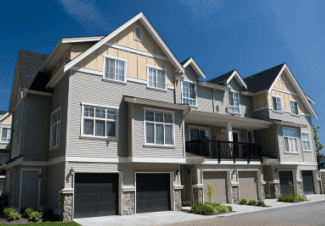A New View Of Property And Asset Management

Property management and asset management both play critical, albeit different, roles in real estate success. Property managers focus on the operation and maintenance of the property and facilities. They handle service/repair requests (either directly or working with contractors), secure tenants and collect rent, and deal with issues arising from staff, tenants and residents. Asset managers focus on higher-level financial forecasting and cash-flow analysis to assess a property’s financial performance. They also advise on acquisition/disposition decisions and identify activities that can increase the value of a property.
The advent of mobile asset tracking applications, remote monitoring internet of things (IoT) sensors, cloud computing and machine learning promise to reshape and meld aspects of these roles. Through mobile apps and remote monitoring, data will be captured on building system assets (HVAC, lighting, plumbing and security). The data will include descriptive elements such as brand/model number/date of manufacture, metadata about the equipment such as efficiency, capacity, and its ongoing operating performance. This data will be streamed to a cloud repository, where machine learning and predictive analytics will be used to drive preventative maintenance decisions, predict system failures, optimize repair vs. replacement decisions and more.
The impact of these new technologies will be profound. Property managers will increasingly make maintenance/repair/replacement decisions driven by their asset impacts. Similarly, asset management is will become much more granular and leverage data about individual building systems in evaluating total property value.
Some Sample Use Cases
Historically, much of the building system repair/replacement decision making was decentralized. In this environment, local property managers developed their own heuristics (“rules of thumb”) about when to service and when to repair or replace a unit. In some cases, the local property manager simply deferred to a local contractor’s recommendation. The ability to standardize these decisions across the enterprise with a data-informed approach is a game-changer. Increasingly, property managers will rely on algorithms to help make these decisions. And the algorithms themselves will be informed with both an eye toward managing costs and tenant impact as well as an asset management sensibility.
For example, my company has created an iOS and Android app that allows a contractor or facilities manager to capture and upload equipment images to the cloud. The equipment data plate is automatically transcribed using machine learning to extract and standardize equipment metadata such as brand/model number/serial number/date of manufacture. When a repair is contemplated, an actuarial analysis of lifetime repair costs is compared to the replacement cost to determine the more cost-effective approach.
Conversely, asset managers will now augment their 30,000-foot view of a property with details of the individual building systems and components, resulting in a more holistic view of a property. The implications of system health and performance will inform and refine estimates of property value. By analyzing data across an entire property portfolio, machine learning will both standardize and improve the efficacy of maintenance activity.
Evolving Business Models
By viewing the individual building systems as assets, entirely new approaches to their management may evolve.
New specialist firms, well-versed in their clients’ industries and the new technology will leverage these capabilities to outsource more of the program work. These providers will deliver value in ways beyond traditional property management firms. Often, these traditional firms focus on the aggregation of spend with a few vendors to drive economies of scale on MRO. The new breed of specialist will use data science to inform the optimal strategy that drives operational savings and asset impact. The specialists will be uniquely positioned to develop optimal repair vs. replacement decisions, create CAPEX plans that identify the best system replacement candidates, and benchmark performance against anonymized data from industry peers.
And even greater disruptions lie ahead. Many industries are migrating to subscription models, in which the user pays a monthly fee to access use rather than buy the product outright. Software-as-a-service is the most prominent example of the subscription revolution, but other industries such as media (Netflix and Spotify), fitness equipment (Peloton), consumer goods (Dollar Shave Club), and even automobiles (Volvo) are all employing the new model.
But what about building systems? Security systems from companies like ADT, Vivint, Alarm.COM and many others offer a monthly subscription model. Clients may also conclude that owning/managing HVAC/lighting/plumbing systems across a complex property portfolio isn’t a core competency. After all, no one really buys an HVAC system — what they’re buying is 72-degree air. So can a building system subscription model be far behind? Providers such as Redaptive and Sparkfund are already experimenting with subscription solutions in lighting, HVAC and other energy systems.
A key enabler of these new business models will be IoT. IoT will allow third-party owner/operators to remotely detect and even remotely diagnose problems before they occur. Such detection will power predictive maintenance programs that can be done at far lower cost and tenant impact than emergency service calls.
For example, HVAC IoT sensors can be as simple as a Nest, Ecobee or Resideo smart thermostat relaying ambient and set-point temperature and run-time. Alerts can be triggered by the devices themselves (such as when ambient temperature deviates from a preset range) or through advanced analytics conducted on one of the more than 400 IoT platforms currently available.
Conclusion
Property management and asset management are poised for dramatic change. A more holistic view enabled by technological advances will empower companies to both optimize their day-to-day operating decisions and the total value of their properties. Organizations that embrace these changes will be well-positioned to reap the benefits.
Source: forbes.com















 Accessibility
Accessibility